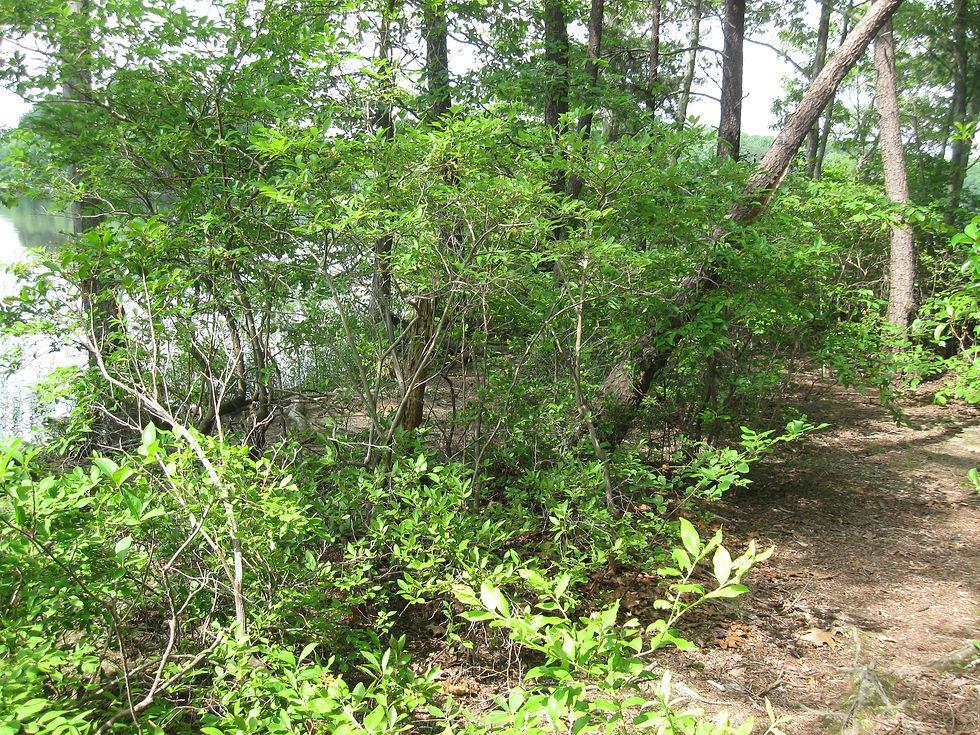How Many Natives Do I Need?
- Matt Bright
- Feb 7, 2023
- 4 min read
This is a question that's often posed in the context of what percentage of one's property ought to be native cover if we want to foster a beneficial relationship with wildlife in our gardens. We're lucky to have preeminent scientists weigh in: the late, great E.O. Wilson in his book Half-Earth argued we need to aim to protect 50% of the planet, land and water, -- a colossal commitment commensurate with the magnitude of the threat of the extinction crisis we are already in. I don't doubt that he and the many great folks working towards this goal at the E.O. Wilson Biodiversity Foundation are correct on this point. But on the local-scale work we confront on a daily basis, it can be hard to visualize what half the planet really means and how we go about getting there.
When confronting our own yards, Desiree Narango, Doug Tallamy, and Peter Marra arrived at a 70% native cover number from their own experimental work. Using black-capped chickadees as a model, and by tracking

the relationship between native cover and arthropod (that is, insects and spiders) numbers, they found that, in their model, chickadees in suburban habitat could be able to forage enough insects to sustainably replace their own population if their territory was at least 70% native plants. (You can read the entire text of their study, "Nonnative plants reduce population growth of an insectivorous bird" here: https://doi.org/10.1073/pnas.1809259115)
Put another way, 70% native cover was a tipping point from chickadees being in a population decline to beginning to have the potential to bounce back. They found that this shift from slowing declining to rebounding upwards hinged on native plants supporting enough native insects -- a crucial food source for the vast majority of our native birds (and many other critters too!).
But are there benefits to going beyond 70% native cover? The answer is a resounding yes! From that very same study you can see that as non-native plant cover declined from 25% to 0% insect and spider abundance continued to climb upwards. Not only did abundance increase, but it increased more dramatically for this last 25% of cover than it did for the first quarter. Stated another way, from their own data, we see that it's more valuable to transform habitat from 75% native to 100% native than to transform a site from 0% native to 25% native.
Indeed, Narango, Tallamy, and Marro write in the section on chickadee population growth (emphasis mine):
Given our estimates, mean population growth in our residential system was only sustainable at <6% nonnative plant biomass (r > 0); however, CIs overlapped replacement when nonnative plants were <30% of plant biomass.
Narrango et al. in the discussion section of their paper nipped the horticultural pushback in the bud (pun intended!). We often hear the argument that non-invasive non-natives don't hurt or may even help though these specious claims are often given without rigorous evidence or only a few handpicked anecdotes. Here they write this:
Because many nonnative plants popular in horticulture are not currently invasive, it has been suggested that their negative ecological impacts are minimal (16) and that they may even benefit animal diversity by increasing plant diversity. Our study challenges this notion; our residential plant communities contained >200 different nonnative woody plant species, far exceeding that found in local natural areas, yet their evolutionary novelty created a trophic dead end for insectivorous consumers.

One of the first concerns I had years ago when I first read this paper was "what about other bird species?" Chickadees were chosen because they don't mind proximity to people and, at least when enough insects and spiders are present, they can successfully rear chicks in and around where we live. But what about other birds worthy of conservation? Can the same be said for warblers, or bluebirds, or purple martins just to name a few? The conclusion from the paper was that we can't be sure that 70% cover is sufficient for everything. Narango writes, "food limitation may be even more pronounced for bird species that have more specialized diets than chickadees." Absent the same rigorous study for other target bird species that these researchers gave chickadees, we may have to assume that for some birds the target may well be higher. Or perhaps other specific habitat needs must be met too.

None of this is to say that 70% is a poor target. Indeed that's the number that Dr. Tallamy and his fellow researchers chose to advocate for after they completed this experiment and certainly they understand their own findings far more than I do!
Simply stated: there is more than ample evidence to suggest that planting beyond 70% native cover has significant ecological benefits and we should encourage gardeners to do so if they can, and aim for 100% cover in natural areas. There's little to no risk going down that route, and we stand the chance of saving more plants and more wildlife if we can pull it off.
- Matt Bright
Executive Director
Recent Posts
See AllDear Friends, Just a few months ago I wrote how we will continue to focus on our conservation work – work that takes time to yield...






























Komentarze